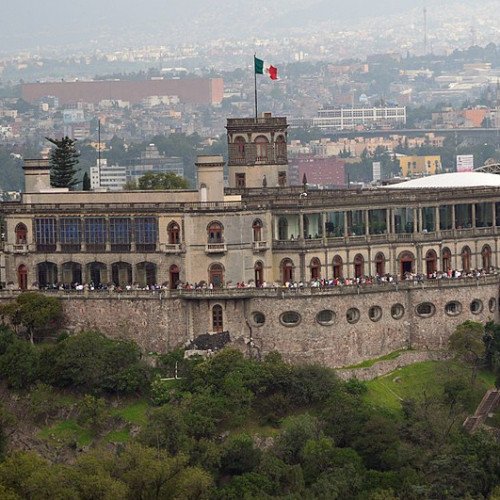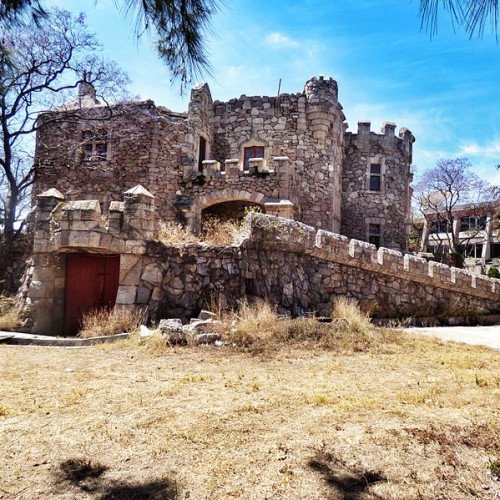Castles of "Mexico" CHAPULTEPEC CASTLE vs CASTILLO DOUGLAS

CHAPULTEPEC CASTLE
Chapultepec Castle (Spanish: Castillo de Chapultepec) is located on top of Chapultepec Hill in Mexico City's Chapultepec park. The name Chapultepec is the Nahuatl word chapoltepēc which means "hill of the grasshopper". The castle has such unparalleled views and terraces that explorer James F. Elton wrote they “can't be surpassed in beauty in any part of the world." It is located at the entrance to Chapultepec Park at a height of 2,325 meters above sea level. The site of the hill was a sacred place for Aztecs, and the buildings atop it have served several purposes during its history, including that of Military Academy, Imperial residence, Presidential residence, observatory, and since the 1940s, the National Museum of History. Chapultepec Castle, along with Iturbide Palace, also in Mexico City, are the only royal palaces in North America. It was built during the Viceroyalty as a summer house for the highest colonial administrator, the viceroy. It was given various uses, from the gunpowder warehouse to the military academy in 1841. It became the official residence of Emperor Maximilian I and his consort Empress Carlota during the Second Mexican Empire (1864–67). In 1882, President Manuel González declared it the official residence of the President. With few exceptions, all succeeding presidents lived there until 1939, when President Lázaro Cárdenas turned it into a museum. In 1785 Viceroy Bernardo de Gálvez ordered the construction of a stately home for himself at the highest point of Chapultepec Hill. Francisco Bambitelli, Lieutenant Colonel of the Spanish Army and engineer, drew up the blueprint and began the construction on August 16 of the same year. After Bambitelli's departure to Havana, Captain Manuel Agustín Mascaró took over the leadership of the project and during his tenure the works proceeded at a rapid pace. Mascaró was accused of building a fortress with the intent of rebelling against the Spanish Crown from there. Bernardo, the viceroy, died suddenly on November 8, 1786, fueling speculation that he was poisoned. No evidence has yet been found which supports this claim. Lacking a head engineer, the Spanish Crown ordered that the building be auctioned at a price equivalent to one-fifth of the quantity thus far spent on its construction. After finding no buyers Viceroy Juan Vicente de Güemes Pacheco de Padilla y Horcasitas intended the building to house the General Archive of the Kingdom of the New Spain; that idea was not to come to fruition either despite already having the blueprints adapted for this purpose. German scientist Alexander von Humboldt visited the site in 1803 and condemned the Royal Treasury's sale of the palace’s windows to raise funds for the Crown. The building was finally bought in 1806 by the municipal government of Mexico City.
Statistics for this Xoptio

CASTILLO DOUGLAS
Castillo Ortega-Douglas (English: Ortega-Douglas Castle), also known as Castillo Douglas, is a castle-like house in central Aguascalientes, Aguascalientes, Mexico. Designed by Federico Mariscal and supervised by J. Refugio Reyes Rivas, it was built for Edmundo Ortega Douglas, whose maternal grandfather, John Douglas (1849–1918), had emigrated to Mexico from Scotland.[1] The house is notable for having the features of a medieval castle, including a moat, a drawbridge, battlements, turrets, and a stained glass window.